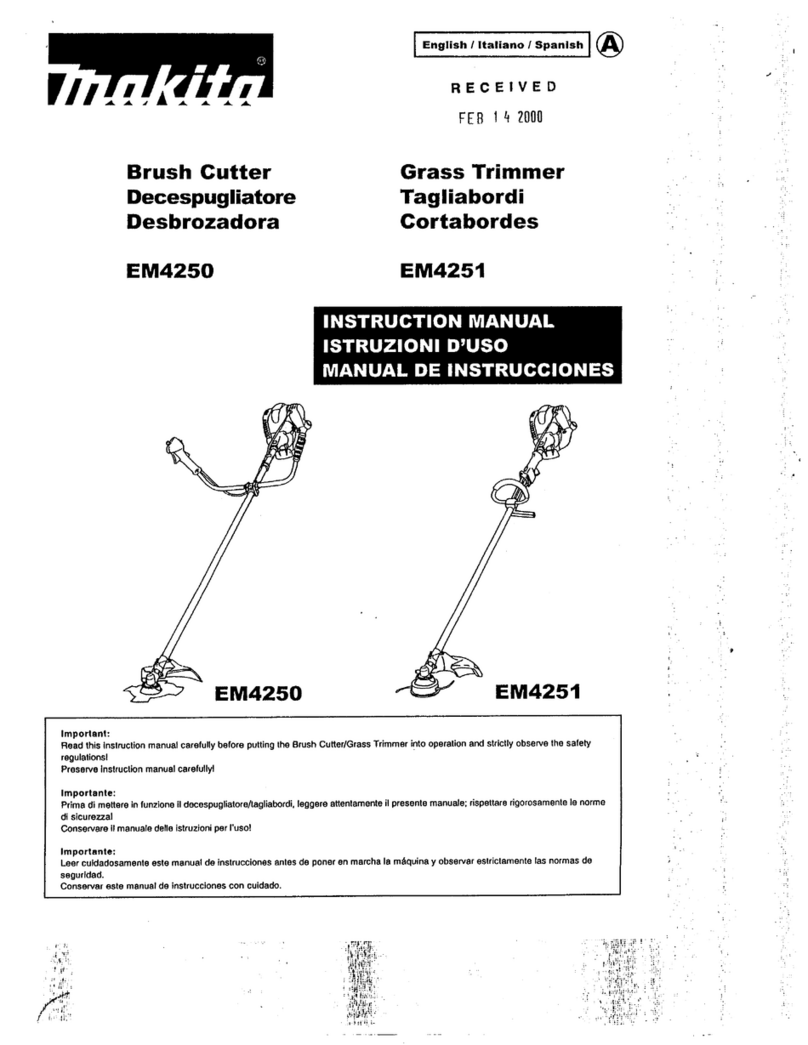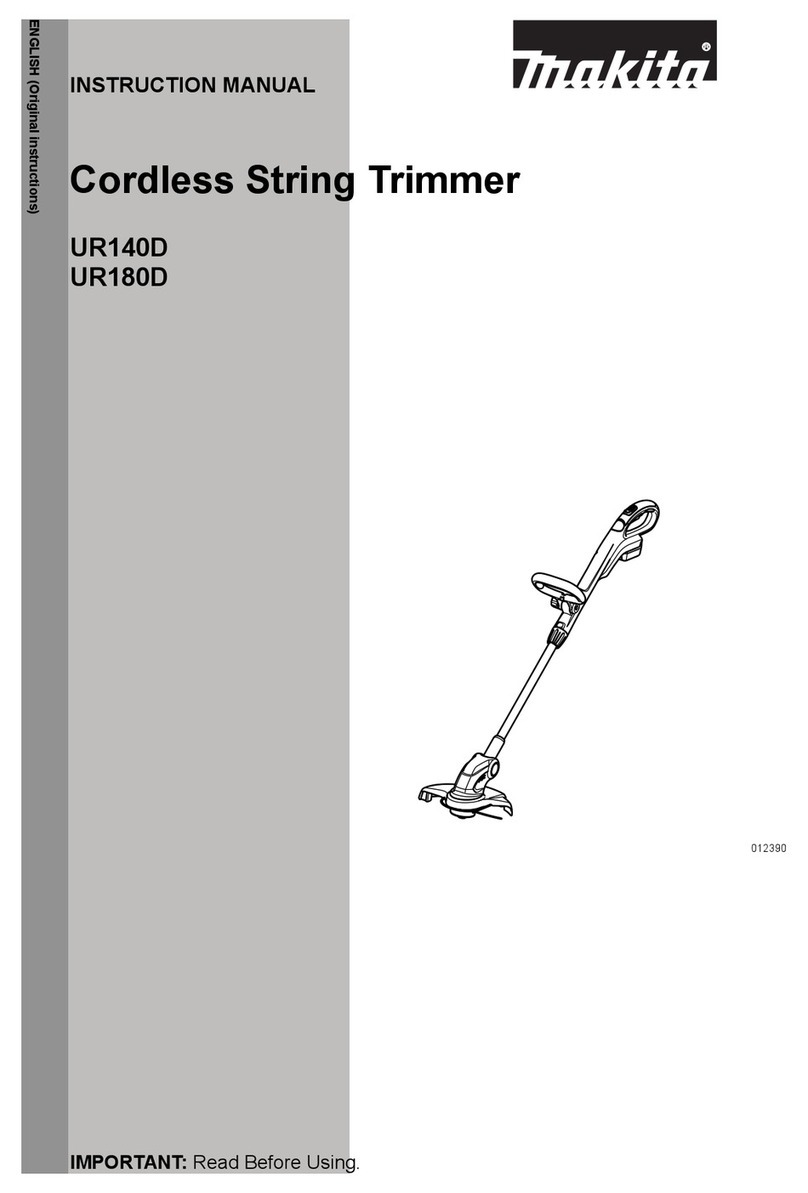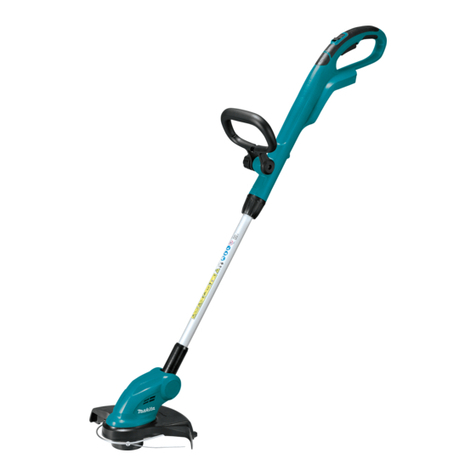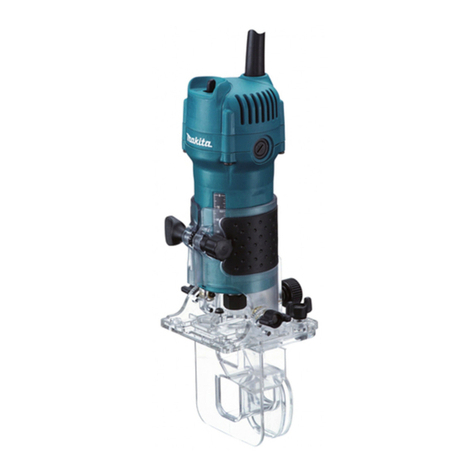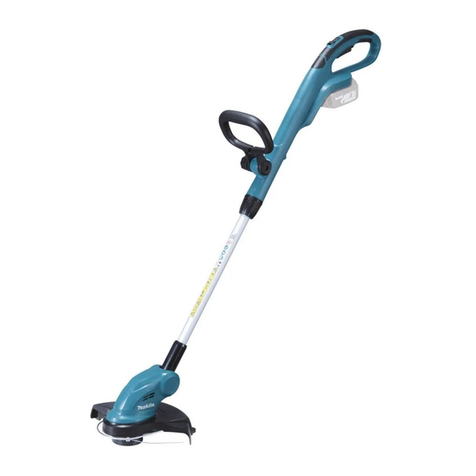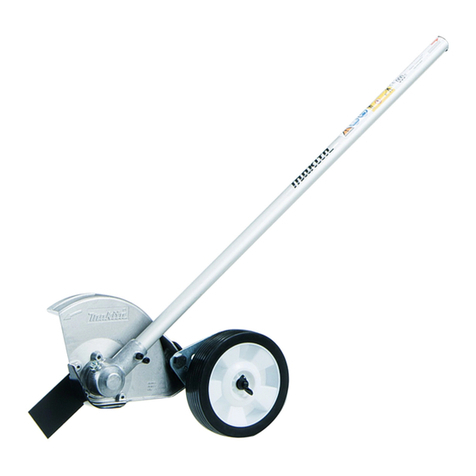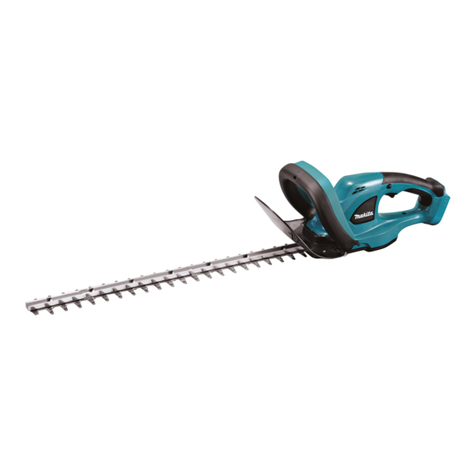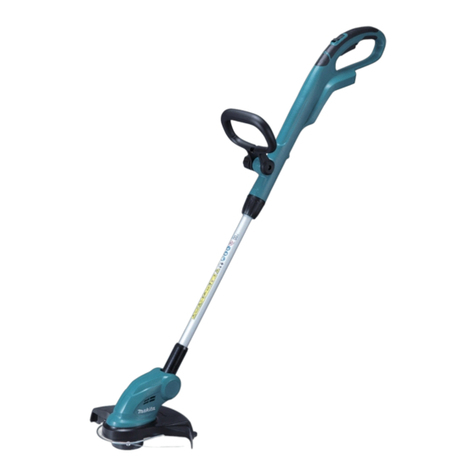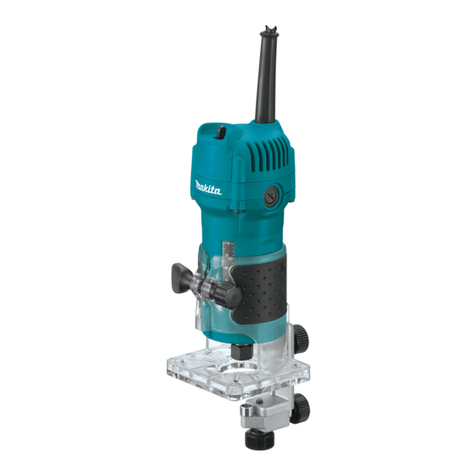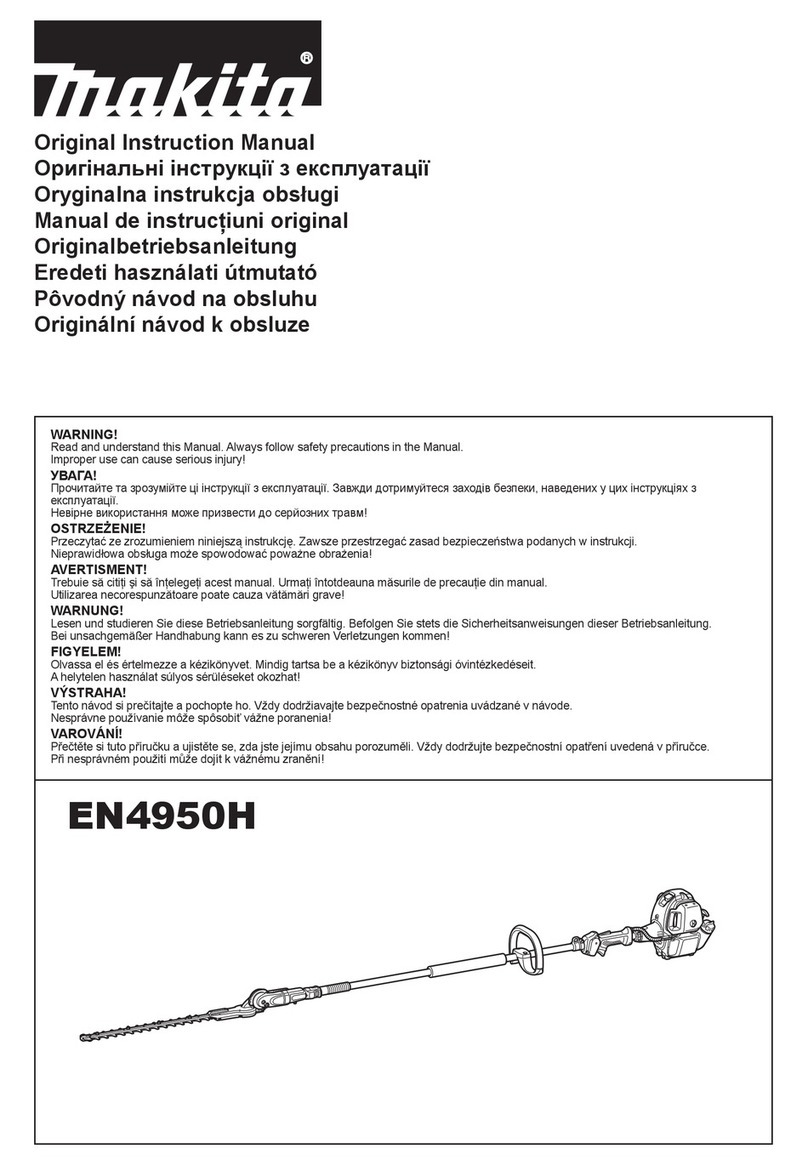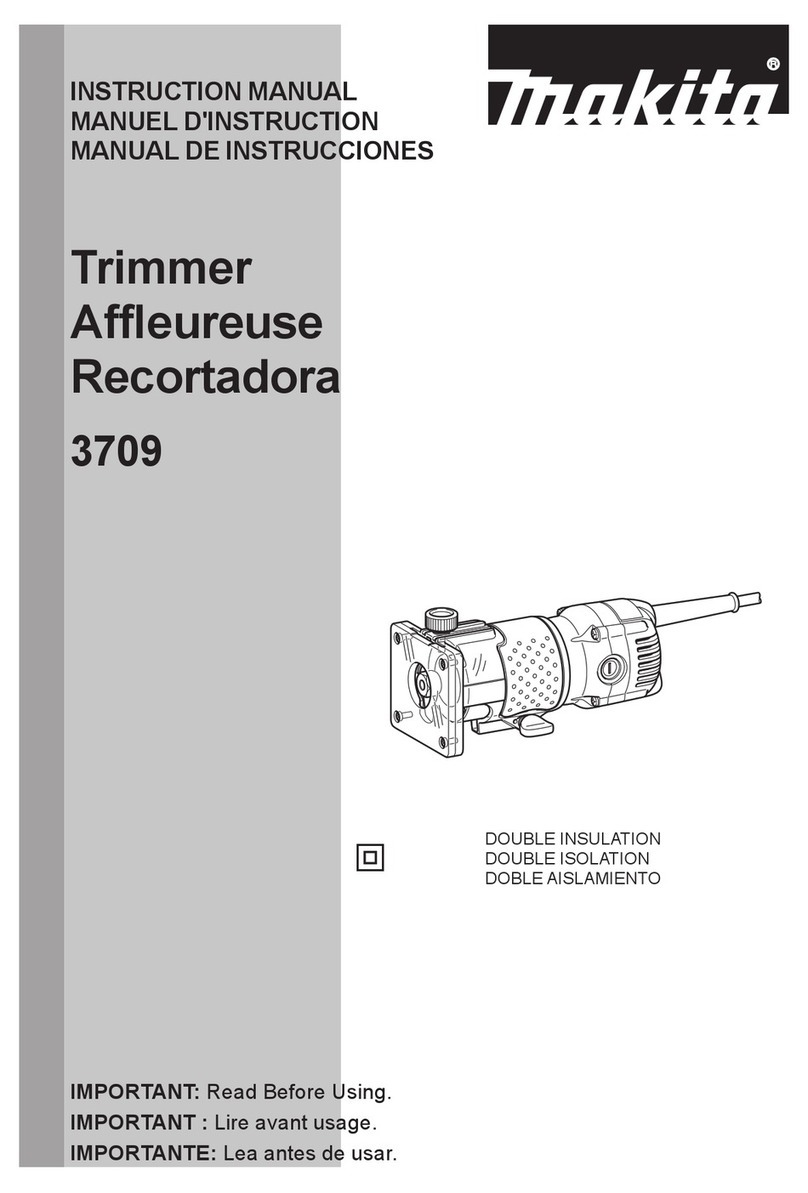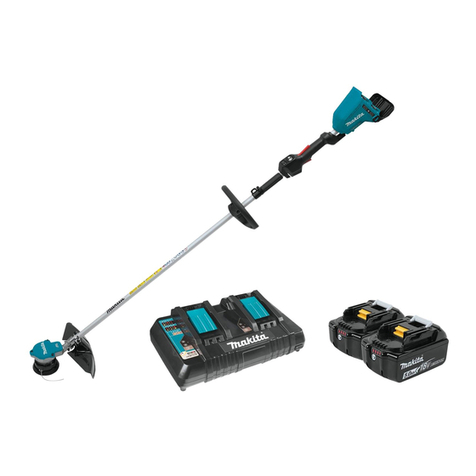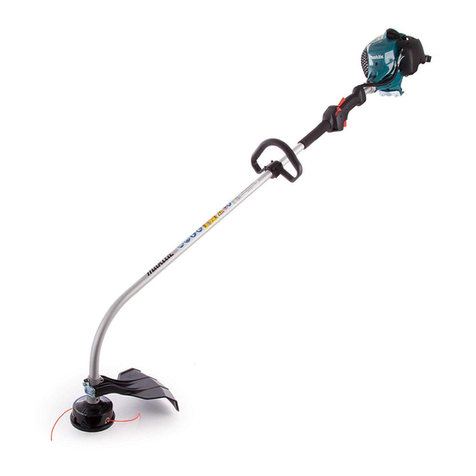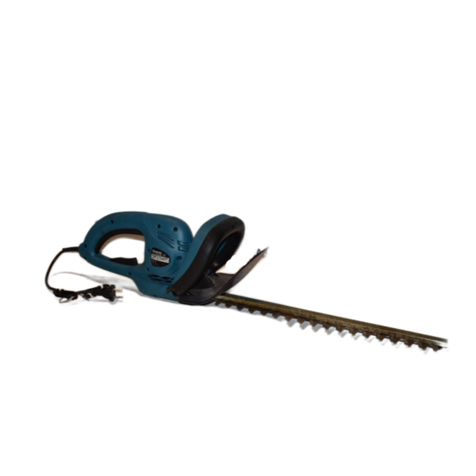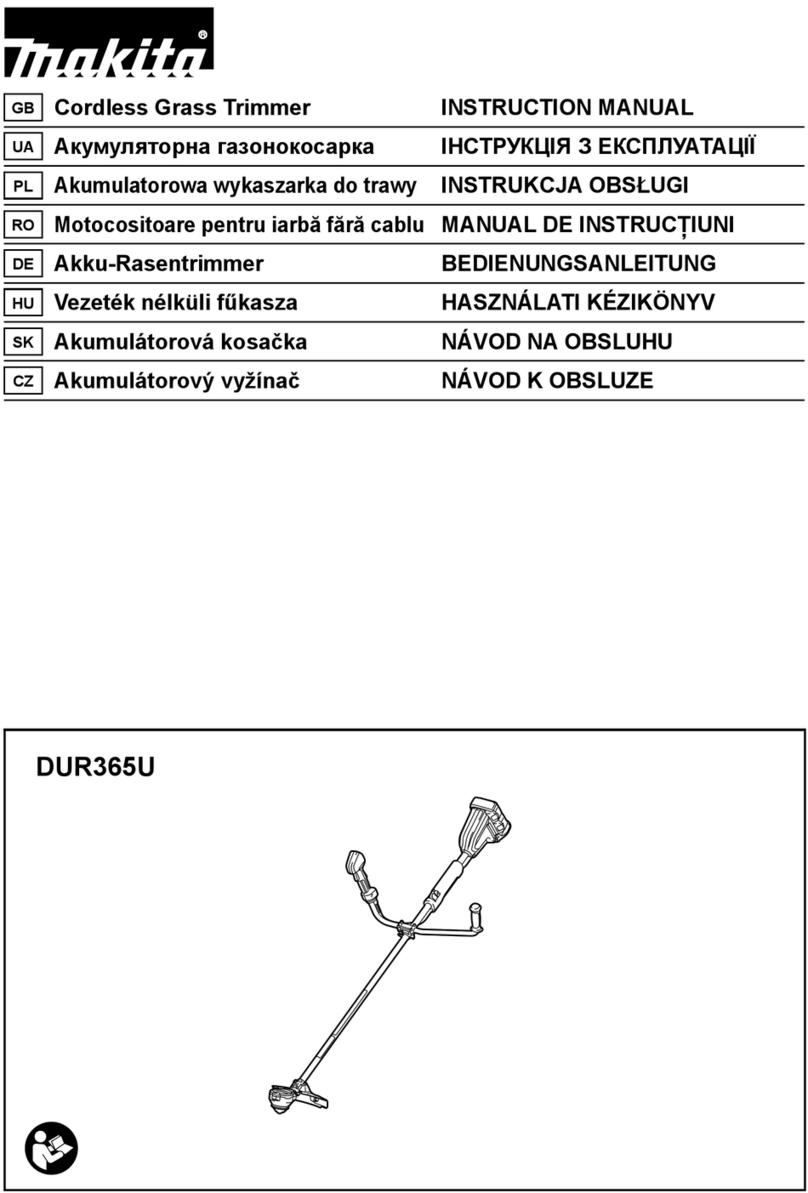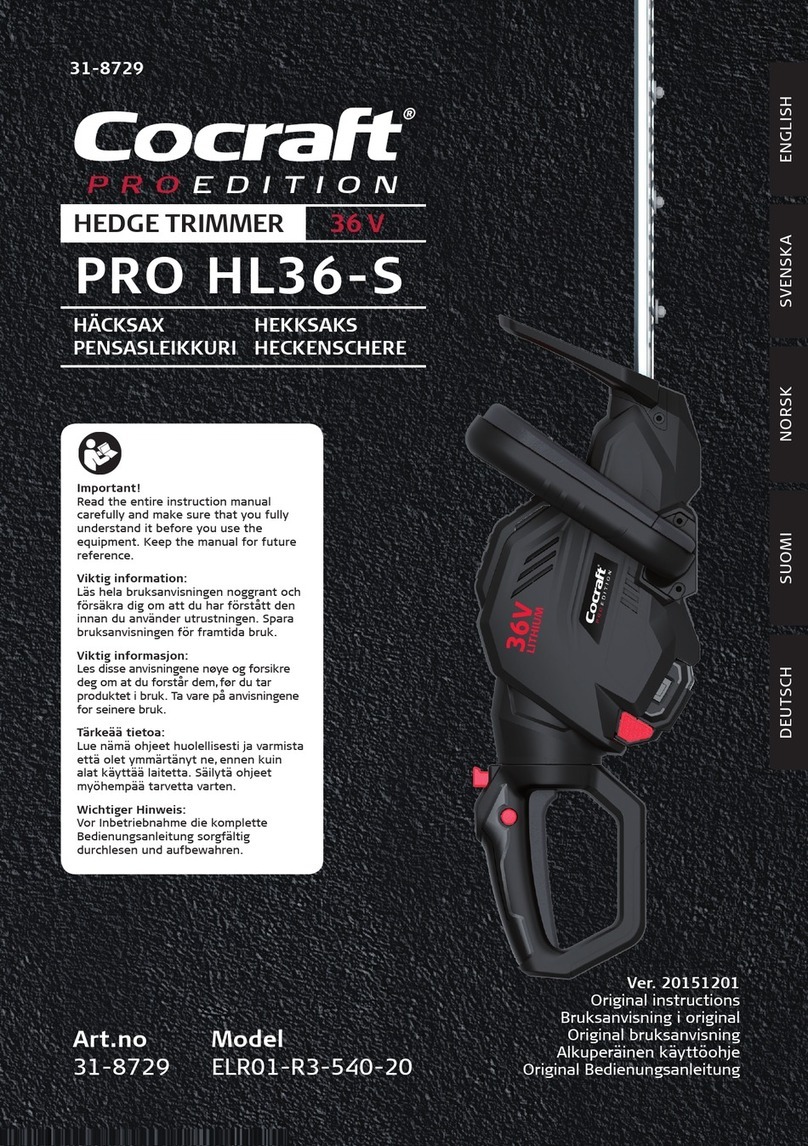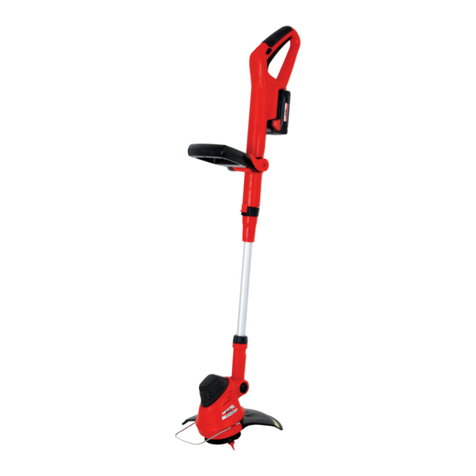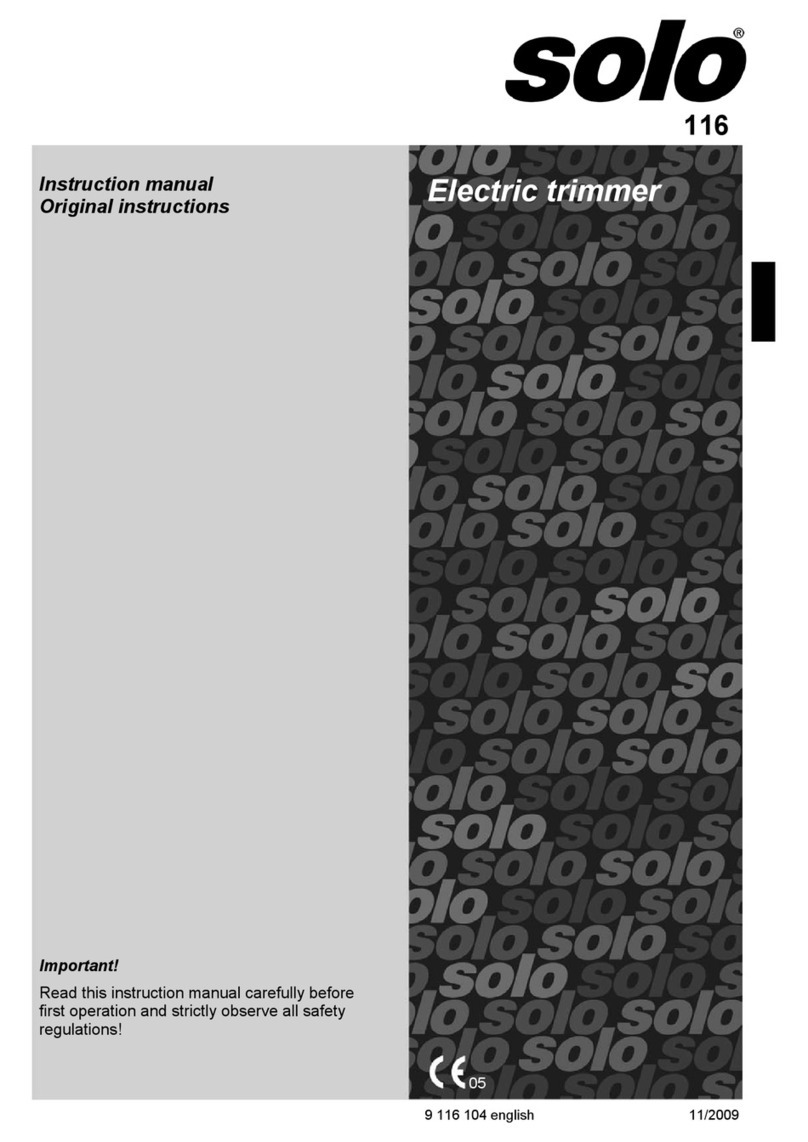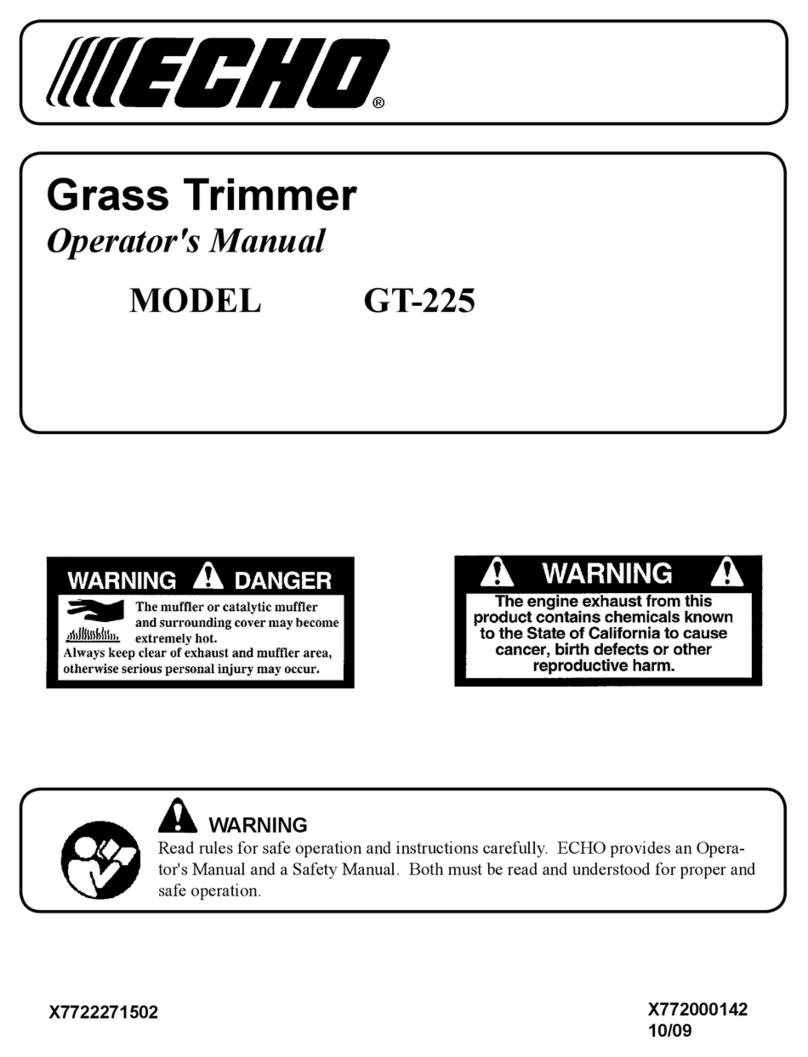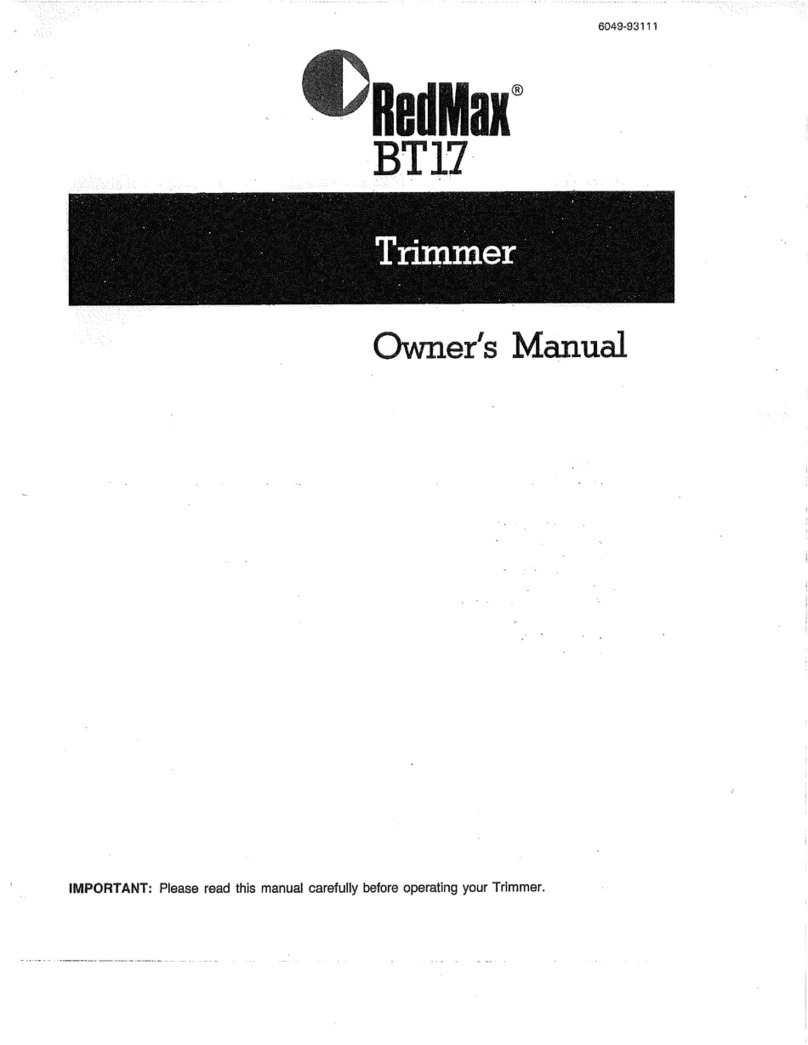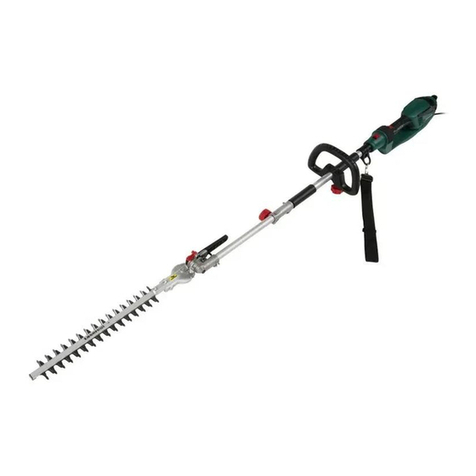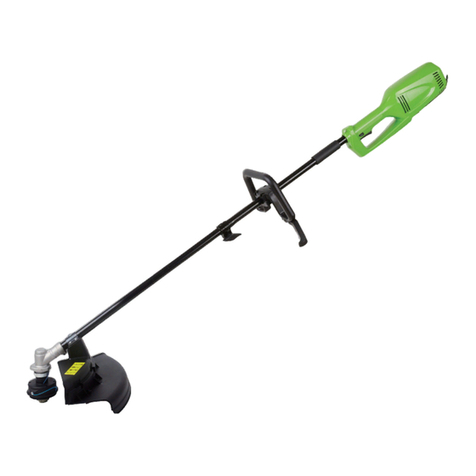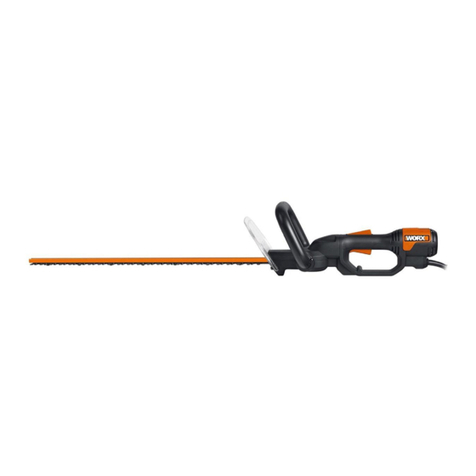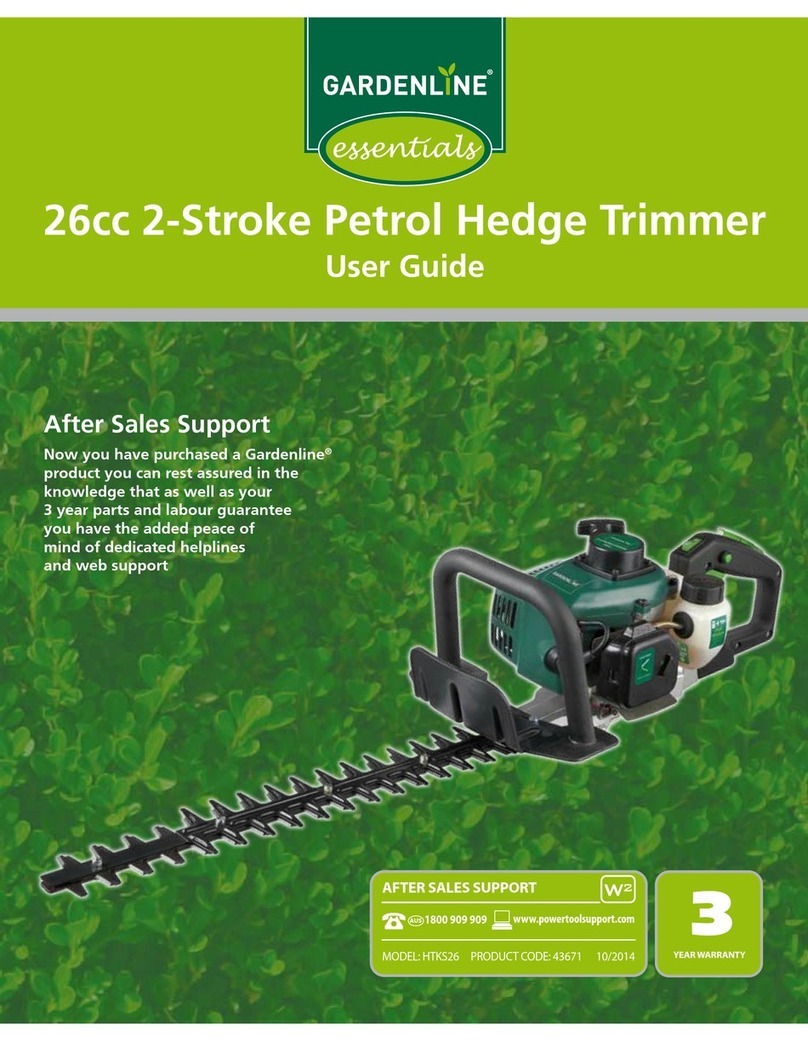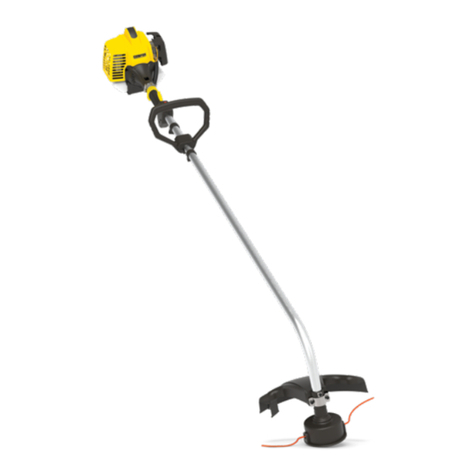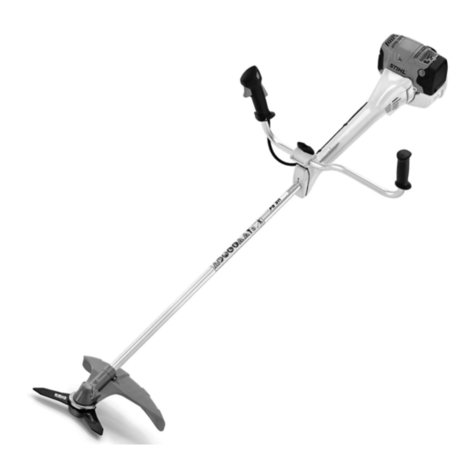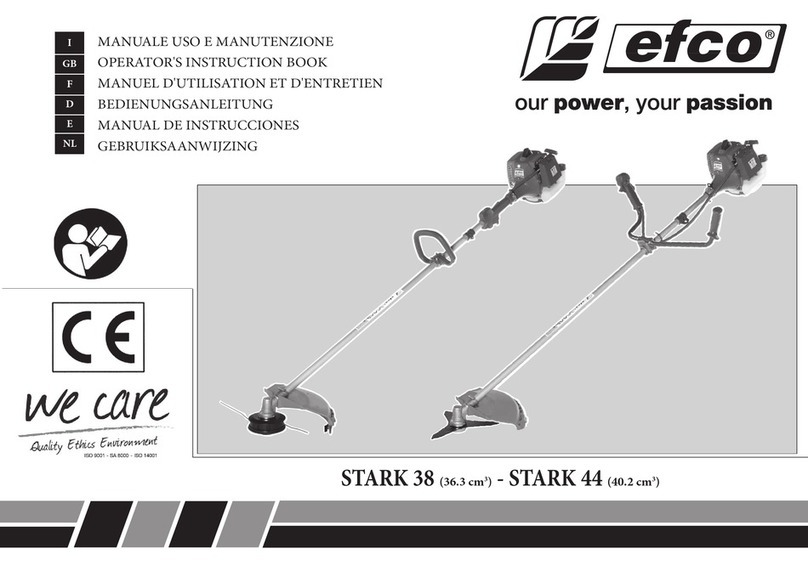
7
7. Do not open or mutilate the battery(ies).
Released electrolyte is corrosive and may
cause damage to the eyes or skin. It may be
toxic if swallowed.
Starting up the tool
360°
012858
1. Make sure that there are no children or other
people within a working range of 15 meters
(50 ft), also pay attention to any animals in the
working vicinity. Otherwise stop using the
tool.
2. Before use always check that the tool is safe
for operation. Check the security of the
cutting tool and the guard and the switch
trigger/lever for easy and proper action.
Check for clean and dry handles and test the
on/off function of the switch.
3. Check damaged parts before further use of
the tool. A guard or other part that is damaged
should be carefully checked to determine that
it will operate properly and perform its
intended function. Check for alignment of
moving parts, binding of moving parts,
breakage of parts, mounting, and any other
condition that may affect its operation. A
guard or other part that is damaged should be
properly repaired or replaced by our
authorized service center unless indicated
elsewhere in this manual.
4. Switch on the motor only when hands and
feet are away from the cutting tool.
5. Before starting make sure that the cutting tool
has no contact with hard objects such as
branches, stones etc. as the cutting tool will
revolve when starting.
Method of operation
1. Never operate the machine with damaged
guards or without the guards in place.
2. Only use the tool in good light and visibility.
During the winter season beware of slippery
or wet areas, ice and snow (risk of slipping).
Always ensure a safe footing.
3. Take care against injury to feet and hands
from the cutting tool.
4. Keep hands and feet away from the cutting
means at all times and especially when
switching on the motor.
5. Never cut above waist height.
6. Never stand on a ladder and run the tool.
7. Never work on unstable surfaces.
8. Don't overreach. Keep proper footing and
balance at all times.
9. Remove sand, stones, nails etc. found within
the working range. Foreign particles may
damage the cutting tool and can cause to be
thrown away, resulting in a serious injury.
10. Should the cutting tool hit stones or other
hard objects, immediately switch off the
motor and inspect the cutting tool.
11. Before commencing cutting, the cutting tool
must have reached full working speed.
12. During operation always hold the tool with
both hands. Never hold the tool with one hand
during use. Always ensure a safe footing.
13. All protective equipment such as guards
supplied with the tool must be used during
operation.
14. Except in case of emergency, never drop or
cast the tool to the ground or this may
severely damage the tool.
15. Never drag the tool on the ground when
moving from place to place, the tool may
become damaged if moved in this manner.
16. Always remove the battery cartridge from the
tool:
−whenever leaving the tool unattended;
−before clearing a blockage;
−before checking, cleaning or working on
the tool;
−before making any adjustments, changing
accessories or storing;
−whenever the tool starts vibrating
unusually;
−whenever transporting the tool.
17. Don’t force the tool. It will do the job better
and with less likelihood of a risk of injury at
the rate for which it was designed.
Maintenance instructions
1. The condition of the cutting tool, protective
devices and shoulder strap must be checked
before commencing work.
2. Turn off the motor and remove the battery
cartridge before carrying out maintenance,
replacing the cutting tool and cleaning the
tool.
3. After use, disconnect the battery cartridge
from the tool and check for damage.
4.
Check for loose fasteners and damaged parts such
as nearly halfway cut-off state in the cutting tool.
5.
When not in use store the equipment in a dry
location that is locked up or out of children's reach.
6. Use only the manufacturer's recommended
replacement parts and accessories.
7. Always ensure that ventilation openings are
kept clear of debris.



